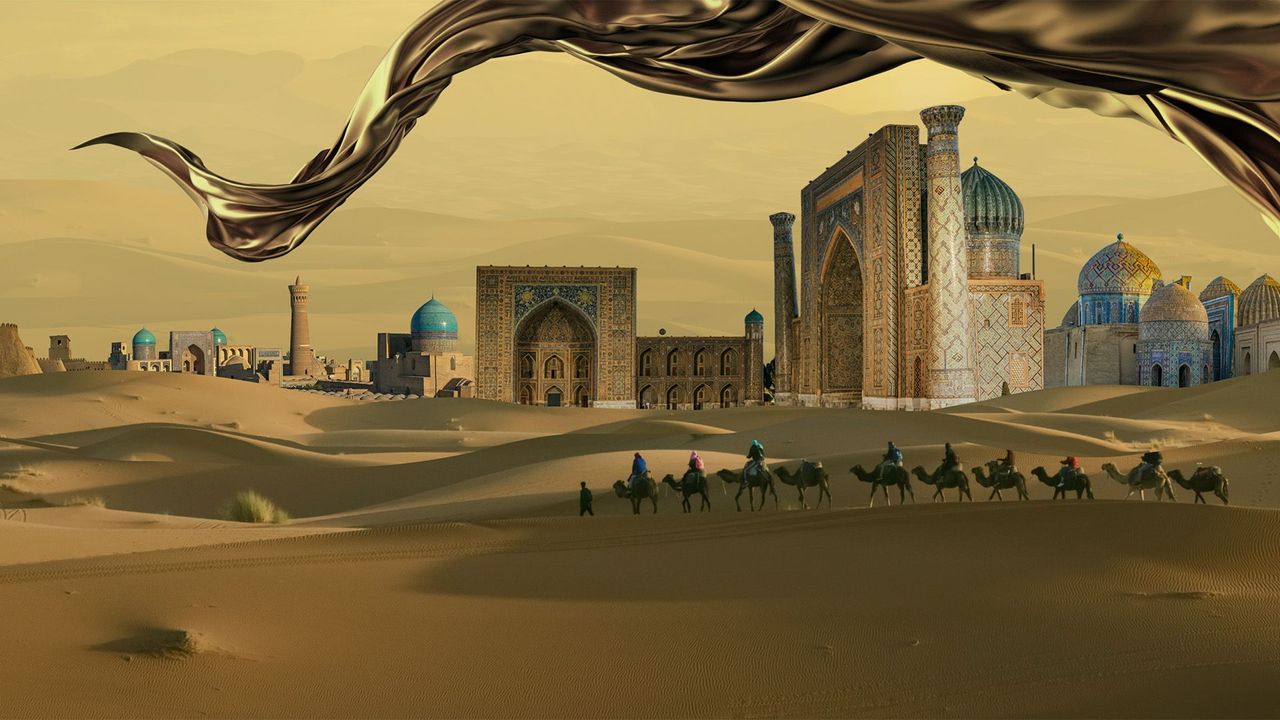The Silk Road Central Asia is more than just a path between places—it’s one of the greatest achievements in human history. Spanning thousands of kilometers, this ancient trade network connected China with Europe, and at its heart lay the vast and diverse landscapes of Central Asia.
Central Asia—home to modern-day Uzbekistan, Kazakhstan, Kyrgyzstan, Turkmenistan, and Tajikistan—was the beating heart of this global system. Merchants, scholars, explorers, and nomads passed through deserts, mountains, and cities, exchanging not only goods like silk, spices, and gold but also ideas, religions, inventions, and art.
This region’s cities flourished as centers of trade and culture. From the glittering turquoise domes of Samarkand to the bustling bazaars of Bukhara, the Silk Road transformed Central Asia into a crossroads of civilizations. In this guide, we’ll explore the route’s history, its most iconic destinations, and tips for today’s travelers looking to follow the footsteps of history.
What Was the Silk Road and Why Was Central Asia So Important?
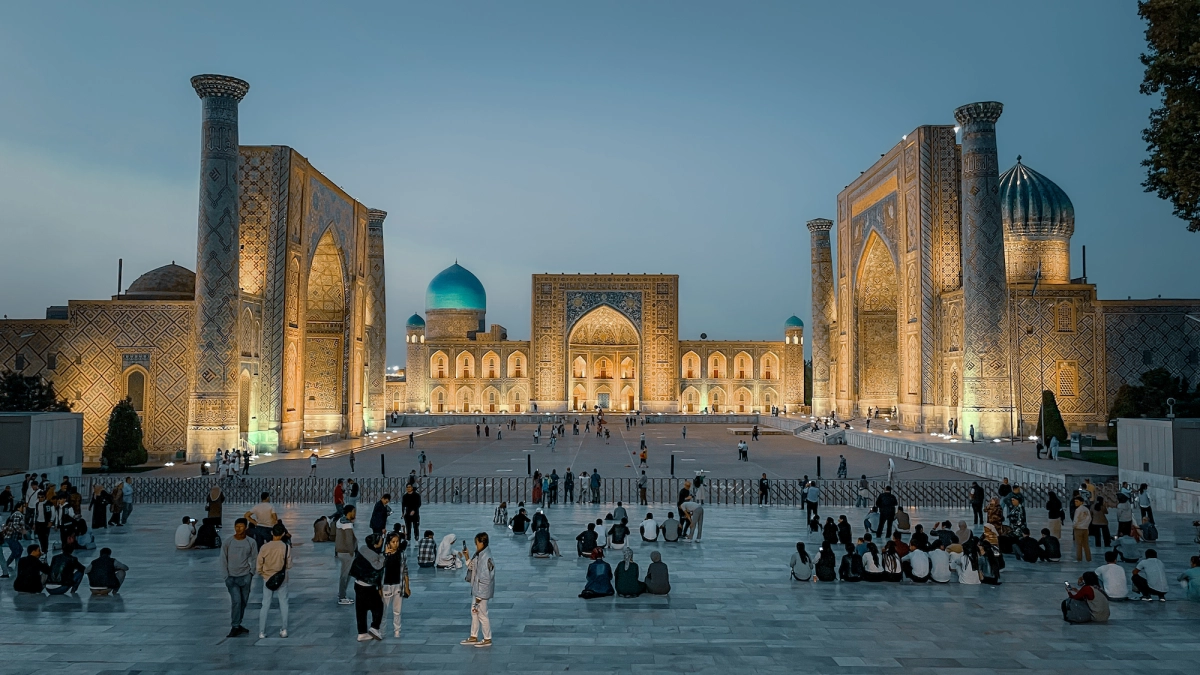
The Silk Road was a vast and complex network of trade routes that emerged over 2,000 years ago, linking China, Central Asia, the Middle East, and Europe. It wasn’t a single road but rather many interlinked paths across land and sea. The name comes from the lucrative silk trade from China, but countless other goods—like spices, horses, jade, paper, and glassware—were traded along the route.
Central Asia was at the heart of this system. Its strategic location made it the bridge between East and West. The region’s natural geography—fertile valleys, high mountain passes, and steppe lands—created ideal transit points for traders and travelers. Empires such as the Sogdians, Kushans, Timurids, and Mongols thrived by controlling and taxing these trade routes, making their cities rich and powerful.
But the importance of the Silk Road in Central Asia wasn’t just economic. It was cultural and intellectual. Religions like Buddhism, Islam, and Christianity spread along the route. Innovations in medicine, mathematics, astronomy, and art also traveled with the caravans. Central Asia became a place where Persian poets met Chinese monks, and where Arabic texts were translated into local languages. It was truly the world’s first global network—and Central Asia was its hub.
Must-Visit Cities Along the Central Asian Silk Road
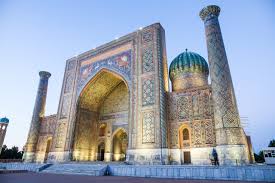
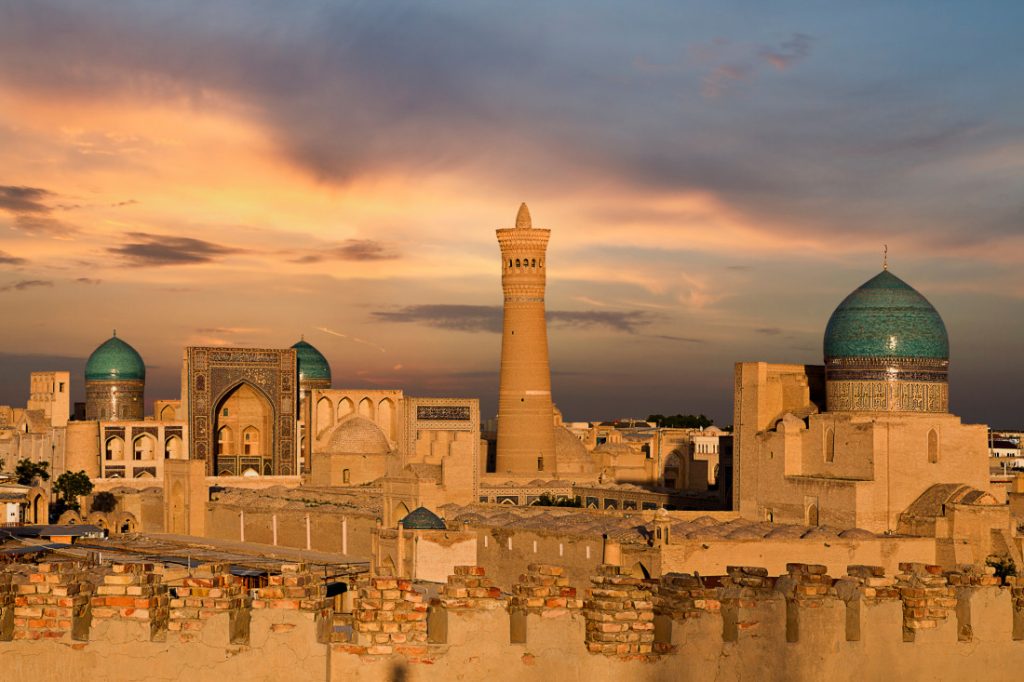
The Silk Road in Central Asia is dotted with ancient cities that still echo with history. These destinations offer stunning architecture, preserved bazaars, and stories that date back millennia.
Samarkand, Uzbekistan
Few cities embody the Silk Road spirit like Samarkand. Established over 2,500 years ago, Samarkand became a central point on the trade route during the rule of Timur (Tamerlane) in the 14th century. He turned the city into a cultural and architectural jewel, blending Persian, Mongol, and Islamic influences into a uniquely Central Asian style.
The city’s crown jewel is Registan Square, surrounded by three grand madrasahs (Islamic schools) decorated in blue and gold tiles. The Gur-e-Amir Mausoleum, resting place of Timur, is another architectural wonder. Don’t miss the Shah-i-Zinda necropolis, a sacred avenue of tombs adorned with mesmerizing tilework.
Beyond the monuments, Samarkand’s old town and markets still pulse with the rhythm of trade. You can sample traditional sweets, buy handwoven silk scarves, and chat with artisans keeping ancient crafts alive.
Bukhara, Uzbekistan
Another gem of the Silk Road, Bukhara has been continuously inhabited for over 2,000 years. It served as a key Islamic center for learning and theology, home to scholars and poets. Bukhara’s architecture and layout have been remarkably preserved, offering visitors a glimpse into a medieval city frozen in time.
Start at the Kalyan Minaret, once the tallest building in Central Asia, which miraculously survived Genghis Khan’s destruction. Visit the Ark Fortress, the ancient seat of Bukhara’s rulers, and explore Lyab-i Hauz, a peaceful square surrounded by madrassas and shady mulberry trees.
Bukhara is also a fantastic place to experience the atmosphere of Silk Road commerce. The covered trading domes (Toqi Sarrafon, Toqi Zargaron) offer everything from carpets and spices to ceramics and embroidered clothing. You’ll feel like you’ve stepped back in time to a marketplace where goods from China and Persia once changed hands.
Khiva, Uzbekistan
The city of Khiva was a vital desert stop for Silk Road caravans traveling between Persia and Central Asia. Its perfectly preserved Itchan Kala (walled inner city) is a UNESCO World Heritage Site and feels like a living museum.
Walking through Khiva’s winding lanes, you’ll encounter tall minarets, elegant mosques, and palaces built with sun-baked bricks and decorated with turquoise tiles. The Kalta Minor Minaret, short and stout, is one of the city’s icons. The Tash Khauli Palace, with its intricately painted wooden ceilings and harems, tells stories of power and royal life.
Khiva’s charm lies in its silence and sense of preservation. There are few places in the world where the ancient atmosphere is so intact. At night, when the city lights cast shadows on its walls, it’s easy to imagine the hum of caravan traders setting up camp just beyond the gates.
The Cultural Legacy of the Silk Road in Central Asia
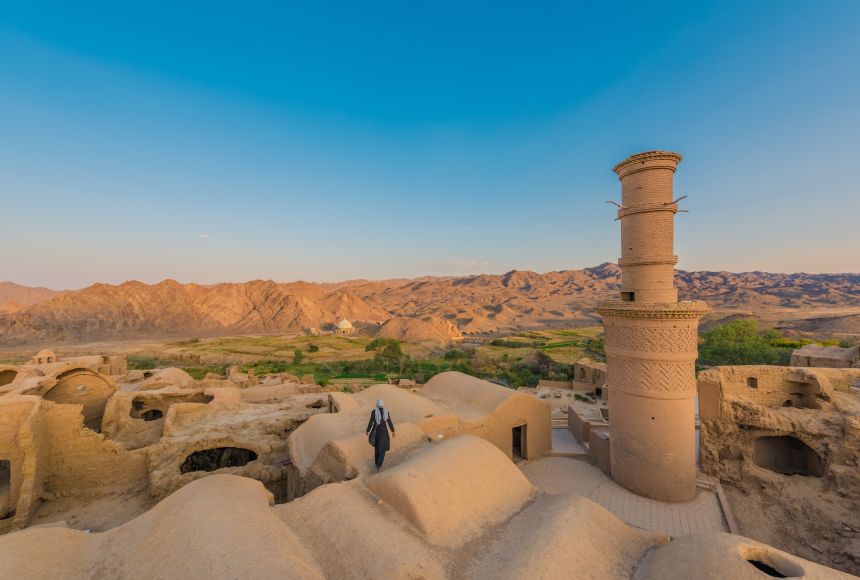
The influence of the Silk Road in Central Asia goes far beyond architecture and trade. It lives on in the region’s languages, food, beliefs, and traditions. Central Asia became a melting pot where cultures from every direction met and blended.
Religiously, the Silk Road brought diversity. Buddhist monasteries, Zoroastrian temples, Christian churches, and Islamic mosques all coexisted along the route. Today, Islam is the dominant religion, but the remnants of older beliefs are preserved in art, ruins, and folk traditions.
Central Asia’s languages reflect the region’s complexity. While many countries now use Turkic languages or Russian, historical documents were written in Persian, Arabic, Chinese, and Sogdian. These linguistic layers tell a story of movement and multicultural exchange.
Artisanship is another enduring legacy. The Silk Road made Central Asia famous for its carpets, ceramics, textiles, metalwork, and jewelry. Even now, craftspeople use techniques passed down for generations, creating items that blend influences from East and West. The region’s food also reflects this fusion—plov (pilaf), mantu (dumplings), shashlik (grilled meat), and lagman (noodles) are local staples that hint at their multi-ethnic origins.
Tips for Traveling the Central Asian Silk Road Today
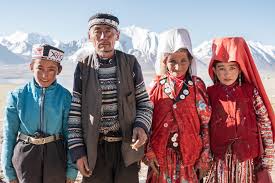
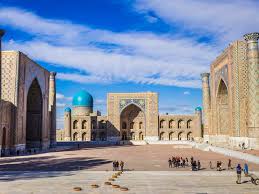
If you’re inspired to explore the Silk Road Central Asia today, you’re in for a richly rewarding adventure. Here are some tips to help you plan your trip:
Plan Your Route Wisely
Start with Uzbekistan—it offers the most iconic Silk Road cities, modern travel infrastructure, and a visa-free policy for many countries. You can then extend your journey into Kazakhstan for Almaty and Turkistan, or head to Kyrgyzstan for nature and nomadic heritage.
Travel in Spring or Autumn
The best seasons to explore Central Asia are April–June and September–October. Summer can be scorching in desert cities like Khiva, while winters are cold and snowy, especially in mountainous regions.
Learn Basic Local Phrases
English is growing, but not widely spoken, especially outside major cities. Learn a few basic Russian or Uzbek phrases—it will be appreciated and useful in markets and smaller towns.
Respect Local Customs
Dress modestly, particularly when visiting religious sites. Remove your shoes before entering mosques, and ask permission before photographing locals. Hospitality is important—don’t be surprised if you’re invited for tea!
Embrace Local Food and Markets
Try local cuisine in open-air bazaars. Sampling fresh bread, dried fruits, kebabs, and green tea is part of the Silk Road experience. Local markets are also perfect for buying authentic souvenirs and supporting artisans.
Conclusion: The Silk Road Lives On in Central Asia
The Silk Road in Central Asia is not a relic of the past—it’s a living, breathing part of the world that still tells stories of global connection, human creativity, and shared history. From the epic monuments of Samarkand to the quiet alleys of Khiva, this journey offers more than sightseeing—it offers perspective.
In a time when modern travel often feels rushed and impersonal, tracing the Silk Road through Central Asia allows you to slow down and connect with a world that once united continents. For lovers of history, culture, and meaningful adventure, this ancient trade route remains one of the most unforgettable journeys you can take.

